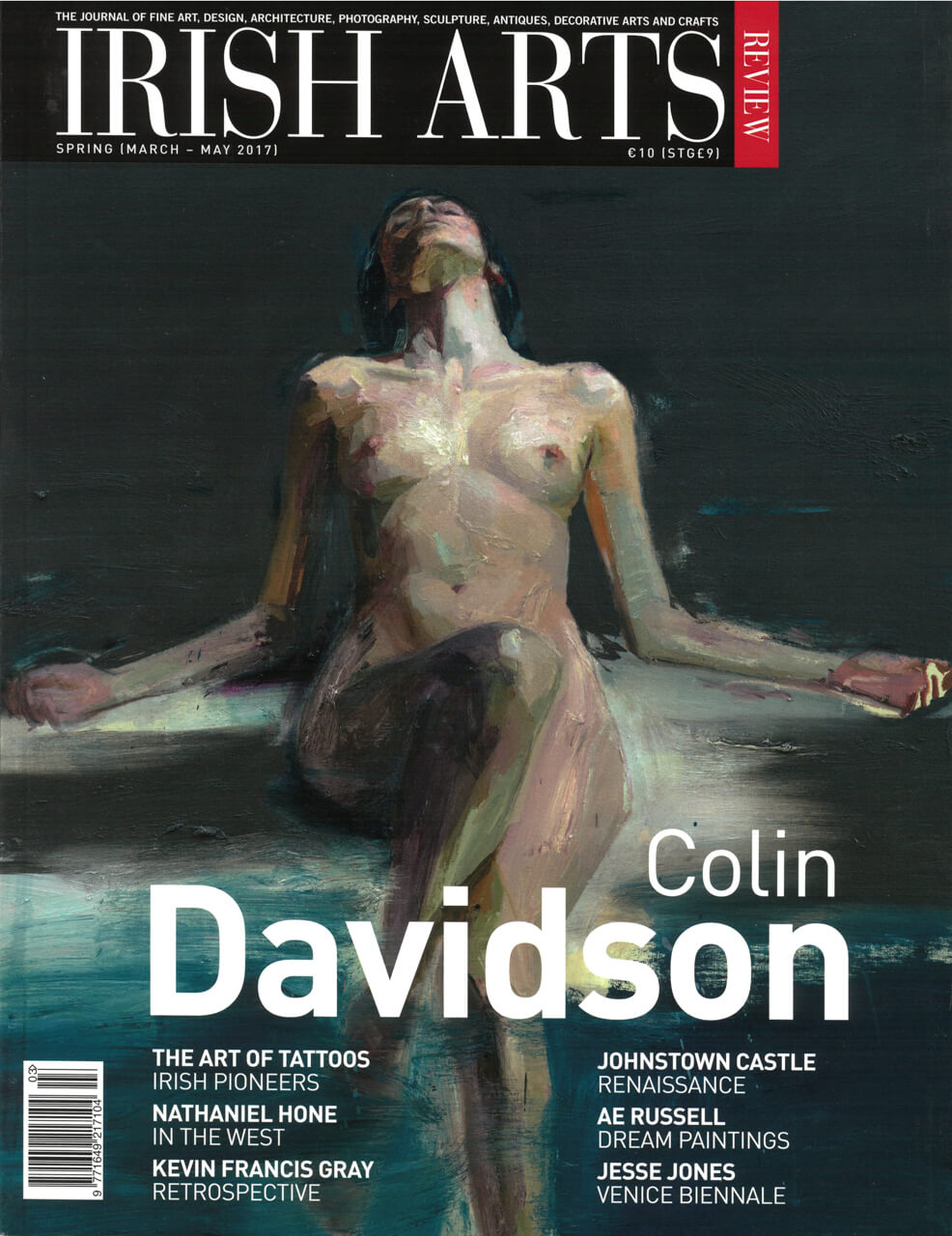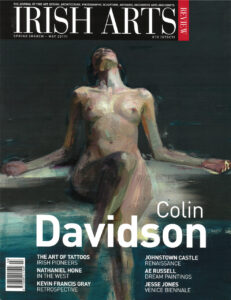

What’s in a name? Is botany an art or a science or a hybrid, muses Matthew Jebb, as he walks through The National Botanic Gardens
While Charles Darwin was exploring the Falkland Islands in June 1833, a meeting of the British Association for the Advancement of Science took place in Cambridge that attempted to define his profession. The motion before the house was to find a term by which to encapsulate what the practitioners of science should be called. The acclaimed poet Samuel Coleridge was vigorous in his condemnation of the use of ‘natural philosopher’; he deemed this far too refined for those who got their hands dirty. Although William Whewell proposed the word ‘scientist’, by analogy with artist, this too was not supported by the meeting, only gaining currency some ten years later. It seems remarkable that a distinguished poet of his day would attend such a meeting, but it underlines the simple fact that no such unnatural division between the arts and sciences existed at that time. It seems strange that simply applying a name to these practitioners should have almost accidentally divided these schools of thought so thoroughly.
The role of the National Botanic Gardens, founded by the Dublin Society in 1795, was to advance the scientific understanding of botany and horticulture. Like so many of the bodies set up by the Society they are functional and practical as well as scientific. Learning as you walk is probably the most natural way to absorb knowledge – our forebears learnt about the world by observing and walking through it. A garden acts as just the same kind of framework – it makes the perfect memory map in our minds on which to hang facts. To learn botany or horticulture it is vital to walk amongst and to see, feel and handle plants. The Gardens has a proud history of bridging the art-science divide, and the use of art as a means of interpretation as well as inspiration from the natural world, means that we are a showcase for both the decorative and fine arts.
Whilst most of our visitors may come to see the plants and gardens, beyond the living collection are many other hidden, or not so hidden, layers. Scattered about the grounds are over thirty sculptural pieces, from a 19th-century Italian marble statue of Socrates, to a Charles Jencks’ earth-sculpture,What is Life?(Fig 8). This last was unveiled by Nobel laureate Jim Watson in 2013 to celebrate the 60th anniversary of his discovery of the double helix, but also to acknowledge its Dublin roots. It was Erwin Schr√∂dinger’s 1941 lectures on ‘What is Life?’ at the Dublin Institute for Advanced Studies that provided the inspiration for Watson and Crick’s discovery a dozen years later, a tribute to the innovative role of Ireland in scientific thought.
In recent years the Gardens has developed a strong relationship with the newly formed Irish Society of Botanical Artists
The Gardens has undergone a renaissance of restoration and building development over recent decades. By happy coincidence this has taken place since 1997, when the Per Cent for Art scheme was made available to all capital projects undertaken by government departments. The scheme ensures that 1% of the cost of publicly funded building development is allocated to the commissioning of integral works of art. When the new herbarium-library building was built, commissions included a sculpture by Michael Quane and the large, glazed foyer was enlivened with appliqué glasswork by Róisín de Buitléar, inspired by the herbarium and museum collections. The visitor centre, built in 2002, has been adorned with plaster bas-reliefs by Lisa Young and a series of twelve portraits by Anna O’Leary. In this era of Google Earth, when a bird’s eye view is commonplace, architect Ciaran O’Connor’s ingenious design, based upon a horse chestnut leaf is plain to see. Architects of the future should take note.
In the herbarium building, over 600,000 pressed dried plants serve to underpin botanical science in Ireland and beyond. Amongst the treasures is a remarkable ‘painted’ herbarium, the work of James McNab (1810-1878) whose father had been, in turn, curator of both the Royal Botanic Gardens of Kew and Edinburgh. Dried plants are the foundation for plant nomenclature and identification: the raw-materials upon which botanists work. We hold the collections of Augustine Henry, for example, intrepid plant explorer in China and first Professor of Forestry at the College of Science. These include the thousands of specimens upon which he based his encyclopaedic work on the Trees of Great Britain and Ireland in 1913. Within the museum, such workaday exhibits as that of wool samples dyed by wild-collected Lichens and prepared in 1908, have themselves become objects of great artistic beauty.
An historic collection of orchid portraits forms the main corpus of the original botanical art collection. The majority of these were done by Lydia Shackleton (1828-1914), cousin of the polar explorer. They were commissioned by Sir Frederick Moore as an aide-mémoire to enable him to know the collection outside its ephemeral flowering seasons. In total they number 1,300 individual portraits dated between 1884 and 1907. Each year Moore would purchase large numbers of orchids from the big London traders including O’Brien, Bull and Veitch, but was also donated material by these same firms. Knowing Moore’s fondness for the small and unusual (plants often spurned by the collectors of flamboyance and gaudiness), many firms would send him miscellaneous collections of unsold material at the end of each season. A consequence of this method of acquiring material meant that plants were often nameless, and when sent to Kew for identification by Robert Rolfe, many proved to be entirely new. By this circuitous manner, the Orchid house became the source of over forty tropical species of orchid new to science, including species such as Aeranthes caudata from Madagascar, painted by Lydia Shackleton in August 1898.
A project, completed in 2004 by Glasnevin horticulturist Brendan Sayers and artist Susan Sex, created what must rank as one of the most sumptuous books in the history of Irish botany – Ireland’s Wild Orchids. The thirty-five plates of the Irish orchid taxa were each sponsored by a donor, who has bequeathed the original to the archives of the National Botanic Gardens, reviving the historic tradition of such patronage. The plate of Dactylorhiza kerryensis, for example, the only orchid species to be found in Ireland alone, was sponsored by Irish entrepreneur Wyn Beere (Fig 5).
In recent years the Gardens has developed a strong relationship with the newly formed Irish Society of Botanical Artists. The society has focused attention on various themed projects which have led to exhibitions and companion books. Two years ago an exhibition entitled ‘Aibítir: The Irish Alphabet’, displayed two complete alphabets (See Irish Arts Review Spring 2014 p64). These were based upon an illuminated letter in a specially designed Celtic script from historian and calligrapher Tim O’Neill. Each capital letter inspired the choice of wild native plant by being the first letter of its Irish name. The most recent project for the society has been Heritage Irish Plants: Plandaí Oidhreachta, illustrating new cultivars of Irish garden plants introduced since 2000 (Fig 2). A series of over sixty portraits were exhibited in late 2016, including daffodils, irises, primroses and snowdrops. (See our review of this publication on page 133).
Every year since 2002, the Gardens has hosted the annual Sculpture in Context competition. Displayed throughout the grounds and glasshouses for two months are pieces by over 150 of Ireland’s established, as well as emerging artists. Many pieces have become permanent additions to our collection, including Niamh Synnott’s ceramic bas-reliefs (2004), Ana Duncan’s Chameleon Going Green (2012) and Alison Bole’s Dr living-stone I presume (2004), a witty take on the succulent genus Lithops. In the last few years the Gardens has been delighted to host the opening night of Great Music in Irish Houses, Ireland’s longest running chamber music festival. These two features of our annual calendar underline the role of art and culture in the life of the Gardens.
Since its foundation, the Gardens has been an inspiration to artists, performers, horticulturists, botanists and architects. The Curvilinear Range, designed in 1834 by Richard Turner, is not only one of the finest surviving wrought-iron buildings in Europe, its decorative and innovative design make it a gem in its own right. It was faithfully restored in 1994, at a moment when the rapid economic growth of Ireland was being compared to a south-east Asian economy. Two years before the phrase ‘Celtic Tiger’ was first coined, the Office of Public Works had already committed itself to one of the most ambitious and expensive restoration projects undertaken in this country. The result is a proud monument to one of Europe’s greatest ironsmiths in his home city.
As one enters the National Botanic Gardens through the car park you step across a bronze disk sunken in the pavement and bearing the title of the Roman poet Lucretius’ great work, De Rarum Naturae (Fig 7). Conceived in the 1st century bc, this remarkable poem – ‘On the Nature of Things’ – was rediscovered by pure chance as a single surviving copy in 1417. Lucretius it was that recast the ideas of the Greek philosopher Epicurus – that everything in this world could be explained by logic rather than divine intervention. This singular poetic work expounds the triumph of the scientific method, fulfilled by Charles Darwin for the biological world in his great work, On the Origin of Species. The final paragraph of that book ends with the wonderful declaration that ‘There is grandeur in this view of life [that]‚Ķ from so simple a beginning endless forms most beautiful and most wonderful have been, and are being, evolved.’ The Gardens remains a place to contemplate the wonder and beauty of the natural world that has been so successfully captured, interpreted and presented through the medium of art.
Matthew Jebb is the Director of the National Botanic Gardens, Dublin.



